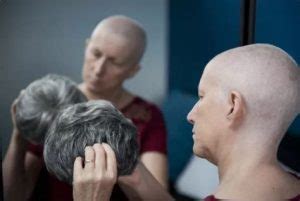Living with cancer is a physically, emotionally, and financially demanding journey. Hair loss, a common side effect of cancer treatments, can add to the challenges faced by patients. However, with the advancements in wig technology, cancer patients now have access to a wide range of options that can help them regain a sense of normalcy and confidence.

Understanding the Needs of Cancer Patients
Hair loss can have a significant psychological impact on cancer patients. It can lead to feelings of vulnerability, self-consciousness, and even depression. A wig can serve as a protective shield, helping patients cope with the physical and emotional challenges of treatment.
Exploring the Types of Cancer Patient Wigs
There are numerous types of wigs available for cancer patients, each with its own unique benefits and disadvantages.
1. Synthetic Wigs
- Pros: Affordable, easy to style and maintain, come in a wide range of colors and styles
- Cons: Can feel less natural than human hair wigs, may not last as long
2. Human Hair Wigs
- Pros: Look and feel like natural hair, can be styled and colored, durable
- Cons: More expensive than synthetic wigs, require more maintenance
3. Custom Wigs
- Pros: Designed specifically for the patient’s head shape and hair texture, provide the most natural appearance
- Cons: Most expensive, require a long lead time
4. Halo Wigs
- Pros: Easy and comfortable to wear, can be styled with natural hair, create a natural hairline
- Cons: May not be as secure as other types of wigs, limited style options
Choosing the Right Wig for You
Selecting the perfect wig for a cancer patient involves considering several factors:
- Head shape and size: Ensure a comfortable and secure fit
- Hair texture and color: Match the patient’s natural hair as closely as possible
- Budget: Wigs range in price from affordable to high-end
- Lifestyle: Consider the patient’s daily activities and style preferences
Wig Care and Maintenance
Proper care and maintenance are crucial to prolonging the life of a wig.
- Washing: Wash wigs regularly with lukewarm water and a gentle shampoo specifically designed for wigs.
- Styling: Use heat-resistant tools and products to style synthetic wigs. Human hair wigs can be styled and colored as desired.
- Storage: Store wigs in a cool, dry place when not in use. Use a wig stand or brush to maintain their shape.
Financial Assistance for Cancer Patient Wigs
The financial burden of cancer treatments can be overwhelming. Fortunately, there are resources available to help patients cover the cost of wigs.
- Insurance: Some health insurance plans cover the cost of wigs prescribed by a doctor.
- Nonprofit organizations: Many nonprofit organizations provide financial assistance to cancer patients in need of wigs.
- Crowdfunding platforms: Patients can start crowdfunding campaigns to raise funds for wigs and other expenses.
Table 1: Comparison of Wig Types
| Wig Type | Cost | Pros | Cons |
|---|---|---|---|
| Synthetic | Affordable | Easy to style and maintain | Less natural feel |
| Human Hair | Expensive | Natural appearance | Requires more maintenance |
| Custom | Most expensive | Perfect fit | Long lead time |
| Halo | Affordable | Easy to wear | Limited style options |
Table 2: Resources for Financial Assistance
| Organization | Contact | Website |
|---|---|---|
| American Cancer Society | 1-800-227-2345 | www.cancer.org |
| CancerCare | 1-800-813-4673 | www.cancercare.org |
| Look Good Feel Better | www.lookgoodfeelbetter.org |
Table 3: Wig Care Tips
| Task | Frequency | Instructions |
|---|---|---|
| Washing | Every 7-10 wears | Use lukewarm water and a gentle shampoo designed for wigs |
| Styling | As needed | Use heat-resistant tools and products for synthetic wigs; human hair wigs can be styled and colored as desired |
| Storage | When not in use | Store wigs in a cool, dry place; use a wig stand or brush to maintain their shape |
Coping with Hair Loss and Regaining Confidence
Hair loss can be a difficult experience for cancer patients. Wigs can play a vital role in helping patients cope with the physical and emotional challenges of treatment. By understanding the types of wigs available, choosing the right one, and providing proper care, cancer patients can regain a sense of normalcy and confidence.
Table 4: FAQ
| Question | Answer |
|---|---|
| How often should I wash my wig? | Every 7-10 wears |
| Can I style my wig with heat? | Yes, for synthetic wigs use heat-resistant tools and products; human hair wigs can be styled and colored as desired |
| Where can I get financial assistance for a wig? | American Cancer Society, CancerCare, Look Good Feel Better |
| How can I cope with hair loss? | Consider wearing a wig to regain a sense of normalcy and confidence |
| Is it okay to wear a wig every day? | Yes, as long as it is properly cared for |
| How often should I replace my wig? | Synthetic wigs last 6-12 months; human hair wigs can last up to 2 years with proper care |
| What is the best type of wig for me? | Depends on factors such as head shape and size, hair texture and color, budget, and lifestyle |
| How do I get a natural-looking wig? | Choose a wig that matches your natural hair color and texture as closely as possible; also consider custom wigs for a perfect fit |
